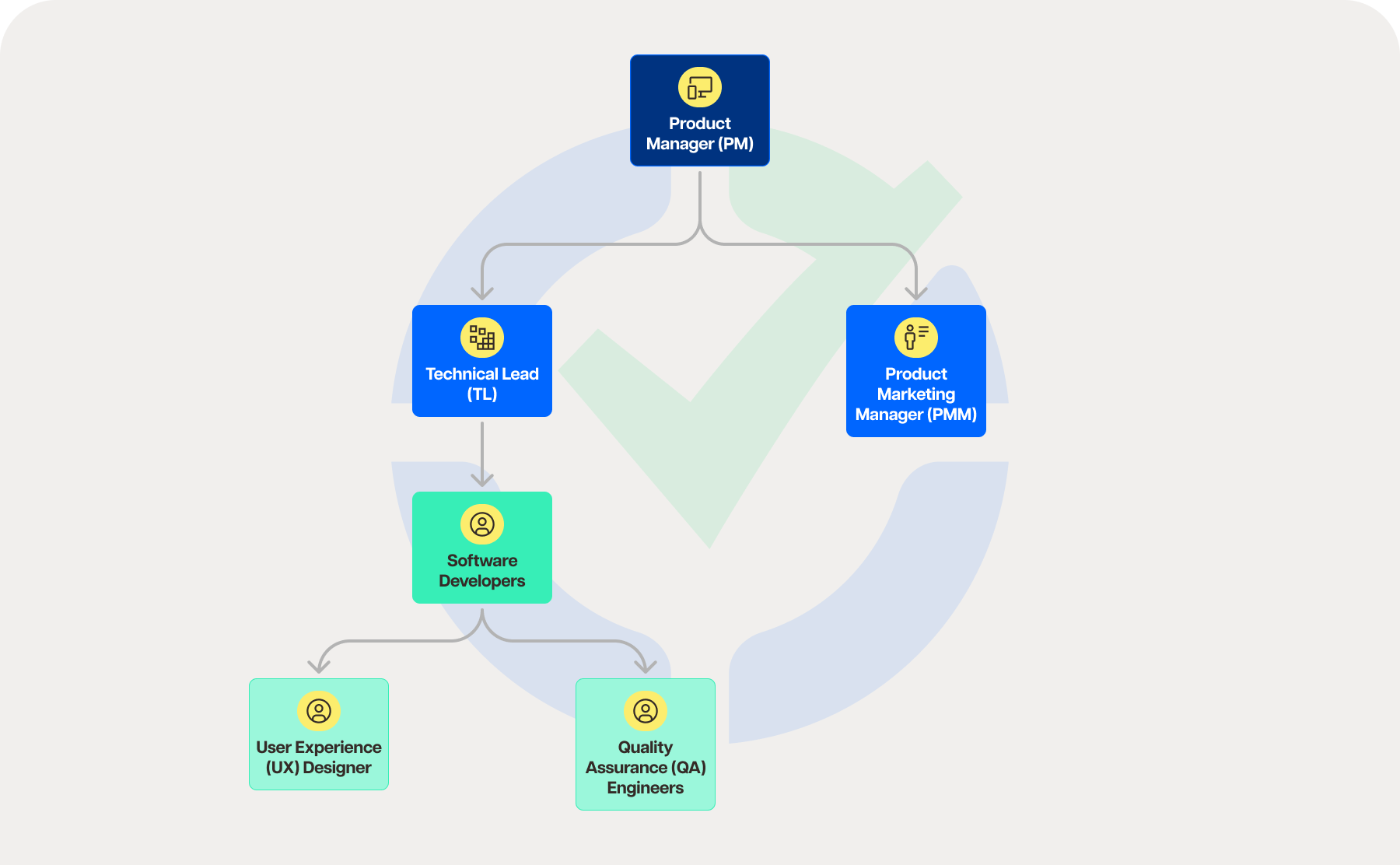Every product firm must arrange its product teams to work successfully. This organizational structure affects how teams communicate and collaborate, which affects product quality and time to market. We will explore the importance and main components of a well-designed product team structure in this blog post. We will also present an example structure and text-based organization plan to show how these components interact.
Table of Contents
- Importance of an efficient product team structure
- Key components of a product team structure
- Sample product team structure
- Efficiency drivers in a product team structure
- Challenges in product team structures
Importance of an efficient product team structure
An effective structure for a product team is essential since it guarantees that roles and duties are clearly defined, makes communication easy, and encourages cooperation amongst various departments.
It makes it possible to integrate different viewpoints and skill sets, which is essential for developing novel products and successfully satisfying consumer demands. Furthermore, the ability of a well-organized workforce to swiftly adjust to changes allows for quicker and more effective product revisions.

Key components of a product team structure
Definition of roles and responsibilities
An effective product team is built on well-defined roles and responsibilities. They clear up misunderstandings, orient team members toward shared goals, and improve responsibility.
The significance of cross-functional teams
Cross-functional teams bring together experts from different fields, like engineering, design, and marketing, to work together on a single product idea. This relationship makes the process of making a product more thorough, making sure that every part of the product is thought about.
Communication and collaboration channels
Product teams need to have efficient channels for cooperation and communication in order to function well. By facilitating the sharing of thoughts, criticism, and progress reports, these channels make sure that everyone is in agreement.
Sample product team structure
A typical product team structure might include:
- Product managers (PMs): Serve as a point of contact for stakeholders and oversee the product team’s overarching vision, strategy, and roadmap.
- Technical lead (TL): Advising the development team on technology and architecture selections, as well as overseeing the technical vision and decisions.
- User interface (UI) designer: Creates the user interface and experience for the product while carrying out usability testing and user research.
- Software developers: Work closely with the TL and PM to ensure that the product requirements are satisfied while you implement features in accordance with the technical specifications.
- Assurance of quality (QA) engineers: Verify that the product satisfies quality standards by testing it and reporting any issues so they may be fixed.
- Product marketing manager (PMM): In order to match product characteristics with market demands, the product marketing manager (PMM) works in tandem with the PM to develop and implement marketing strategies.
This structure forms a cross-functional team that integrates technical, design, and marketing capabilities. It illustrates the responsibilities within a product team and how they interact to guarantee the success of the product.

Efficiency drivers in a product team structure
- Agile methodologies: Using agile techniques may help you become more adaptable, encourage iterative development, and react quickly to changes in the market.
- Frequent feedback loops: Ensuring that the product satisfies user demands and facilitating ongoing improvement may be achieved by establishing regular feedback loops with stakeholders, including consumers.
- Ongoing education and development: Promoting ongoing education and development among team members encourages creativity and maintains the group flexible enough to adapt to new tools and processes.
Challenges in product team structures
- Miscommunication: Delays and errors in product development, leading to frustration and misalignment within the team.
- Overlapping responsibilities: Confusion and inefficiencies arise, along with potential conflicts due to unclear boundaries.
- Resistance to change: Hinders new technology adoption and slows adaptation to market changes and user feedback.

Solutions to overcome these challenges
- Develop a clear organizational chart and job descriptions to clarify roles and responsibilities.
- Regularly review and adjust roles to meet project and team dynamics.
- Implement regular team meetings and one-on-ones to promote open communication.
- Use collaborative tools that facilitate sharing and feedback.
- Foster an environment where feedback is welcomed and acted upon.
- Encourage the team to stay informed about industry trends and technologies for adaptability and learning.
- Provide opportunities for professional development and continuous learning.
- Celebrate team flexibility and innovation, rewarding positive contributions to change.
- Utilize project management and communication tools to improve collaboration.
- Train all team members on the efficient use of collaboration tools.
- Incorporate feedback mechanisms for internal and external stakeholder insights.
- Use feedback for continuous product and team structure improvements.
- Build a culture that supports risk-taking and learning from failures.
- Encourage mentorship and knowledge sharing within the team.
By addressing these challenges with thoughtful strategies, product teams can enhance their efficiency, innovation, and cohesion, leading to the successful development and launch of products that meet and exceed market expectations.
Conclusion
An efficient product team structure is essential for the successful development and launch of products. It requires a clear definition of roles, cross-functional collaboration, and effective communication channels.
By addressing common challenges and leveraging drivers of efficiency, organizations can create productive teams capable of delivering high-quality products within shorter timeframes.
Adopting such a structured approach to product team organization can significantly contribute to meeting both user needs and business goals.

Andy is a technology & marketing leader who has delivered award-winning and world-first experiences.


